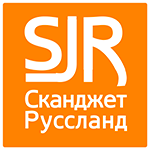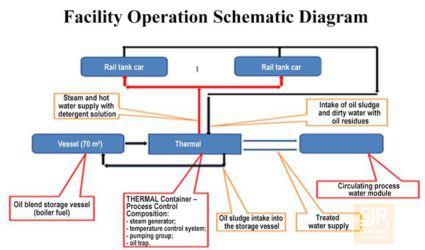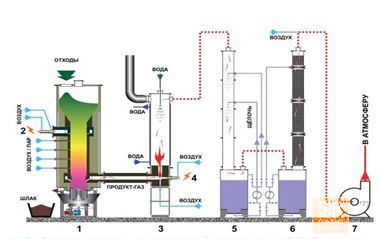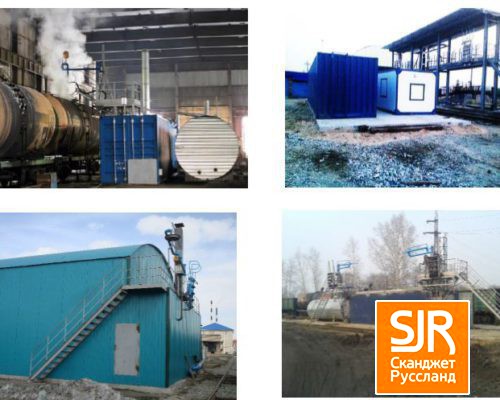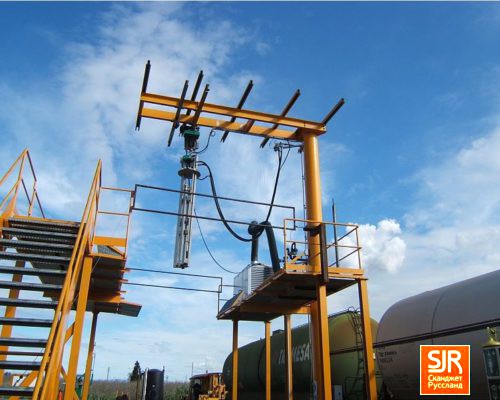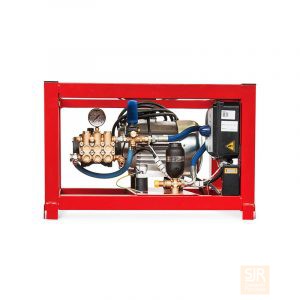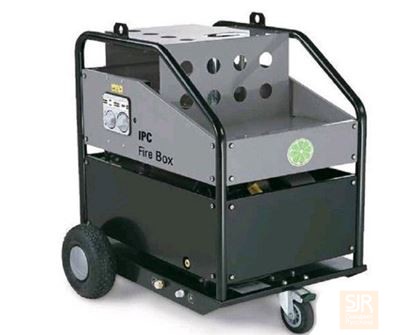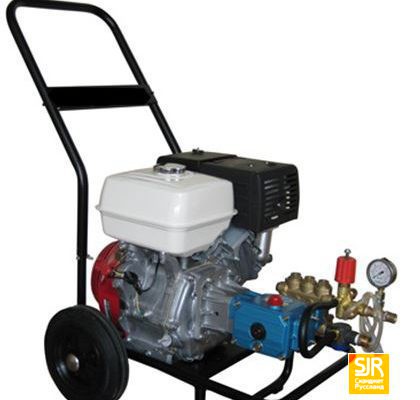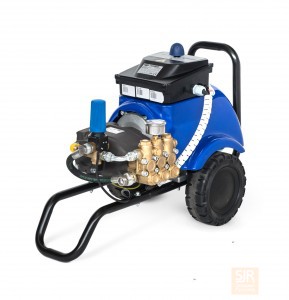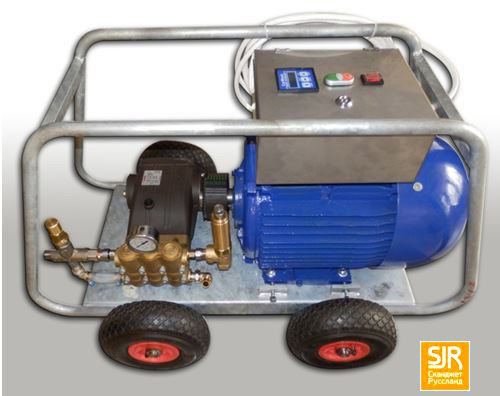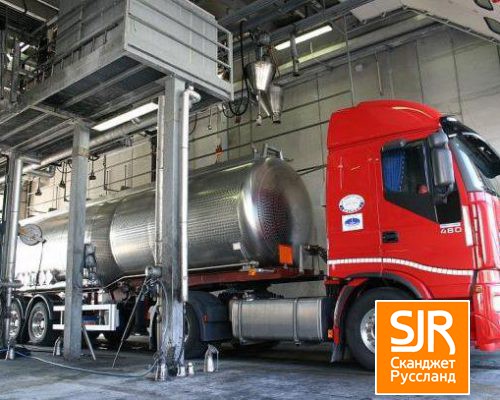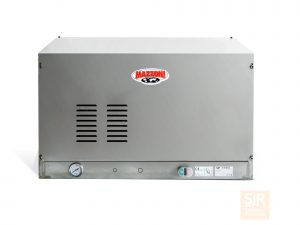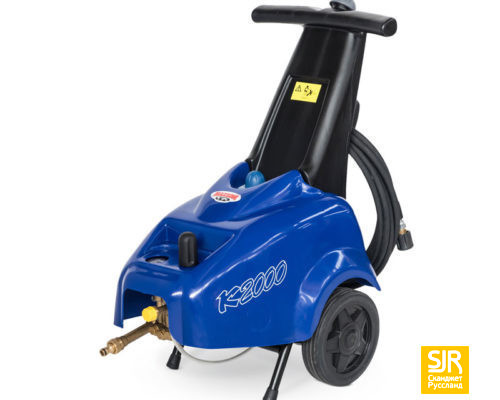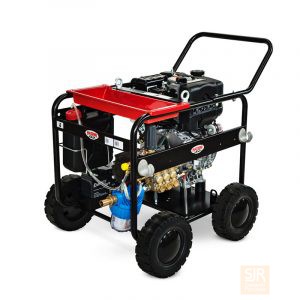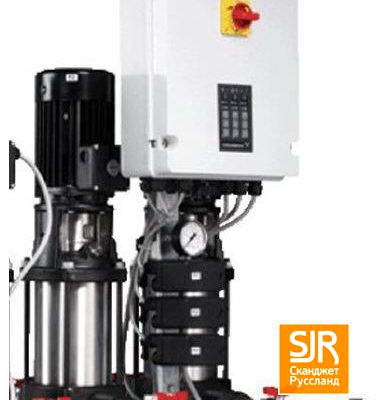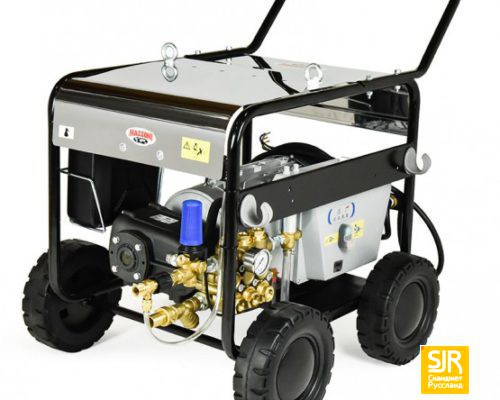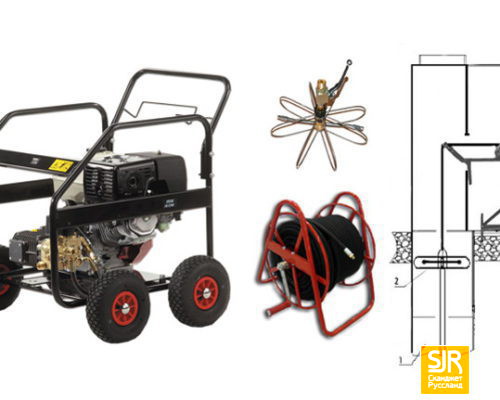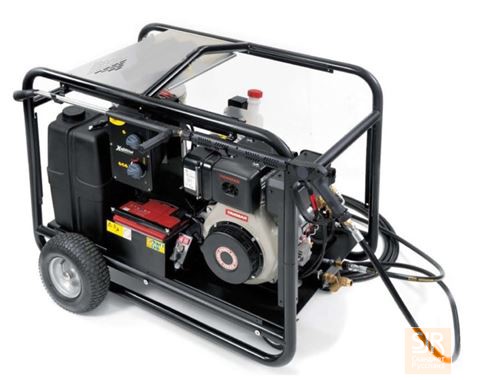Описание
“Production of the Mobile Facility for Cleaning Internal Surfaces of Rail Tank Cars from Oil Residues”
Scanjet LLC offers a facility for fast and high-quality washing of the inner surfaces of rail tank cars from hydrocarbon residues. The washing is carried out for loading and performing repair and preventive works, with the residues of dark oil products up to 500 mm in height of the tank shell when collecting the washed off petroleum product completely. The quality of washing rail tank cars meets the requirements of GOST 1510-84.
The technological process is a continuous closed washing cycle using the method of recycling water use, in which the technical circulating water is used multiple times.
The proposed process solution is based on the use of technical circulating water with the addition of a degreasing agent. A new volume of water can be replenished as necessary, with a decrease in the volume in a main vessel, which contributes to the economical consumption of an eco-friendly washing agent.
The eco-friendly washing agent is a degreasing agent, which is not a solvent. The agent operating principle is a selective action on long chains of hydrocarbon compounds, which is responsible for the removal of organic contaminants (oil products) from the washed surface, therefore there are no aggressive actions on the surface of metal, paint coatings, rubber, and skin. The degreasing agent meets modern requirements of ecological safety, does not require disposal. It is non-combustible, non-toxic, non-abrasive, non-carcinogenic, completely biodegradable, has pronounced demulsifying properties (does not create a homogeneous emulsion), a softener, with antistatic and anticorrosive action for operations of washing, degreasing and passivation (corrosion protection) of metal surfaces from oil and petroleum products.
During washing of tank cars, mechanical and hydrocarbon contaminants, which are affected by the degreasing agent by displacing from the water composition onto the surface of the oil-containing components, with a clear phase separation, are released. Additional array of process vessels allows us to fully isolate mechanical and hydrocarbon compounds from the washing composition into a separate vessel. The extracted waste can be used in the production of lubricants, stove fuels and asphalt fillers. The Company’s specialists have developed a technology, in which petroleum products obtained during the treatment of a tank shell (oil blend), are dewatered and can be used in a steam generator plant, because the water content of the product does not exceed 1.5%.
The essence of the application of this technology is as follows:
- The fuel for steam generators is petroleum products collected after washing of tank cars (in case both mazut/oil and gasoline/diesel fuel tanks are treated).
- The technical circulating water and washing agent shall not be replaced, only correction of the solution is necessary with the addition of a degreasing agent, while in the automatic mode there is complete purification from mechanical impurities and washed oil products that are disposed of or used at your discretion.
- The negative impact on the environment is minimized, and all environmental and industrial standards and requirements are observed.
- The Facility is fully operated in a closed cycle, since the chemical agent can withstand temperatures of up to +300ºC and does not decompose, is converted to steam, and the tank walls are rapidly and qualitatively treated.
- The inside of a tank shell is simultaneously degassed with the steam cleaning (since there is a chemical agent in the steam), which does not allow the tank shell to spontaneously detonate (tank cars intended for transporting gas condensate have been treated at the station of Purovsk)
The Facility can be connected to the Company’s power grids, if necessary, a self-contained power supply (diesel generator) is provided.
— operating temperature range of -40°C to 50°C;
— shift duration of 12 hours;
— number of key personnel per shift is 4 people;
— power consumption up to 100 kW;
— meets the requirements of fire and explosion safety category B-1a;
— meets the requirements of environmental safety;
— 12 months warranty, warranty and post-warranty service;
— service life is 10 years.
The uniqueness of this method:
- High environmental safety — the operation of equipment in a closed loop and the use of special detergents, which allow to completely collect residues washed out, which allows to exclude harmful impact on the environment.
- Mobility of the Facility — it allows the Facility to be placed both in a stationary version, on a railway platform, and on a vehicle chassis, which greatly expands the range of services provided (cleaning tank trucks directly at the trucking enterprises, cleaning tanks of oil tankers in the port)
- High profitability — is based on a reduction of energy demands.
- The volume of washed tanks is increased fivefold by increasing the temperature of detergent composition up to 90ºC and supplying steam up to 160ºC, thereby reducing the cleaning time of the tank. The washing solution is converted into the vapor state, which allows in winter to dramatically reduce the time of tank heating up to operating washing temperatures of 80-85ºC.
- There are no treatment facilities.
- The oil residues collected in the process of cleaning are used as a secondary fuel (boiler oil fuel) that meets all the requirements of technical specifications (TU).
The washing time per one rail tank car is not more than 40-50 minutes for the washing cycle.
The Facility is made «on a turn-key basis» and is ready for operation immediately after delivery.

This technology is applied at the following sites:
- city Svobodny, Amur Region (territory of the Svobodny Railroad Car Repair Plant — a branch of TVM, LLC);
- city Ussuriysk, Primorsky Krai (within the Refrigerator Car Repair Depot (VRK-1) there is a facility for washing of one tank car);
- Settlement Purovsk, Yamalo-Nenets Autonomous Okrug (within the depot of the Freight One Company (Freight One) there is a facility for simultaneous washing of 4 tank cars);
- city Cheremkhovo, Irkutsk Region (territory for the preparation of rail cars at the Cheremkhovo Car Repair Enterprise — branch of TVM, LLC).
Typical equipment configuration of the 2-station Facility for treatment of 20 to 40 tanks per day
- The thermal module, delivered in a 40-foot sea insulated container:
— oil blend-fired 1000 kg/h steam generator, serving to supply the saturated steam with a chemical agent (steam temperature up to +160ºС and pressure up to 6 atm) into the tank shell. Steam can be supplied through the spray head or directly through the hermetic universal cover.
— 1000 kg/h steam generator – a standby one in the summer and an auxiliary one in the winter.
— oil blend preparation system to supply oil blend into the fuel oil burner;
— modified fuel oil burner fired with oil blend;
— pumping station, which provides the supply of process water with a chemical solution to the spray heads;
— pump to pump out the process water with oil products from the tank shell;
— water and steam pipeline system;
— steam generator control cabinets;
— pump control cabinets;
— lighting;
— main distribution panel;
— fire extinguishers to ensure fire safety standards.
- The cleaning module, delivered in a 20-foot sea insulated container:
— system for cleaning process circulating water from oil products and mechanical impurities.
- a) oil cleaning storage vessel intended to separate oil products from process water and accumulate technical circulating water in the volume required to operate the feed pump;
- b) hydrocyclones used to remove mechanical impurities from process water;
- c) pulsed magnetic unit designed to treat the technical circulating water by pulses of magnetic current, thereby converting water to completely separate the oil product from water molecules;
— system for purifying the oil blend from molecular water and feeding the oil blend into the steam generator preparation system;
— technical circulating water feed pump designed to feed the technical circulating water into the system of hydrocyclones and pulsed magnetic unit;
— oil blend feed pump designed to feed the oil blend into the steam generator preparation system;
— pump control cabinet;
— pulsed magnetic unit control cabinet;
— lighting;
— fire extinguishers to ensure fire safety standards.
- The technical circulating water storage module, delivered in a 40-foot sea insulated container:
— 35 m3 twin-shell vessel filled with ethylene glycol between shells, equipped with 2 oil collection funnels and 2 access manholes. The vessel is equipped with steam heating registers for radiators feeding from the steam generator located in the thermal module, and process water stabilization fins, as well as the system for draining possibly formed oil products into the cleaning module.
- Oil blend storage module:
— 70 m3 insulated vessel with steam heating registers for storing the oil blend designed to operate the steam generators. It has an upper manhole, is insulated with 100 mm mineral wool and covered with corrugated tin sheets.
— outside (electrode or heating element type) closed-cycle steam generator (PGVK).
— point for issuing surplus oil blend to the road transport and/or loading dark oil products with a system of gate valves, measuring equipment, and meters.
- 2 observation fenced platforms located at the corners of the thermal module, equipped with stairs and walkway, lowered ladders, as well as washout risers.
- The washout riser equipped with a universal hermetic lid and a 2-nozzle spray head. The riser is provided with counterweights to facilitate mounting on the tank and its returning into a parking position.
- Bottom unloading intended to provide the bottom unloading of process water with oil products or oil products themselves from the tank shell. Due to the fact that the Facility has an oil products storage vessel, it is possible to unload oil products with an innage level up to 500 mm.
- Facility’s area lighting with LED floodlights.
(please, specify what you would like to delete from here….)
